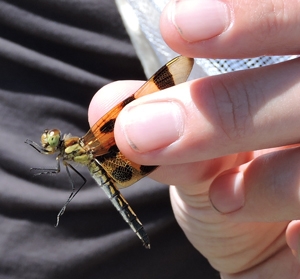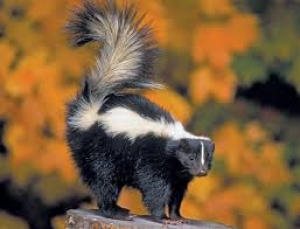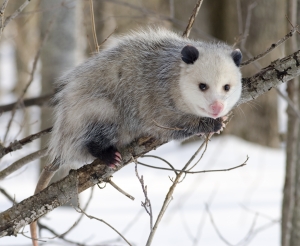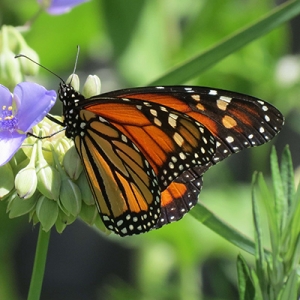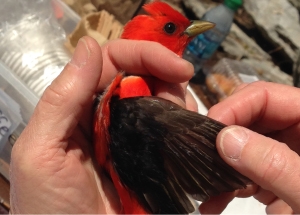
Storied Landscapes
Earth Day is nearly upon us. Each year we pause on April 22nd to think about ecology, climate change, preservation—survival. This past year, people the world over have come together around the protection of our waters, taking up the chant "Water is Life." Now as we think about the health of our planet, I invite you to consider the way we "story" water, the earth, the sky, and all the natural beings in the universe. In The Truth About Stories Indigenous writer Tom King asks, "Do the stories we tell reflect the world as it truly is, or did we simply start off with the wrong story?"
Native Animal of the Month: Eastern American Toad
Many folk tales, urban legends, and myths have led people to believe just plain inaccurate things about some of our wild creatures. Dragonflies were believed to be the Devil’s helpers by sewing naughty children’s eyes shut while they slept. Bats were believed to get tangled in people’s hair in the dark because of misconceived poor eyesight. And, ravens were thought to be premonitions of death. I’ve heard countless critter myths throughout the years, but one creature in particular continues to surprise me with its maligned status: cue the American Toad.
CRIKT and You
It is the season of showy butterflies, buzzing cicadas, crackling grass hopper wings and CRIKT research. Nope, that is not a typo. CRIKT stands for “Citizens Researching Invertebrate Kritters Together” and this research team at the Urban Ecology Center is leading the nation in its approach to field ecological research. “Invertebrate Kritters” refers to the vast array of animals found in the insect, spider and mite categories. Because invertebrates impact people in a variety of ways: pollinating crops, decimating crops and invoking some of our greatest fears or senses of awe, they have been studied quite a bit over the years. So what sets CRIKT apart? It is WHO is involved and WHERE they work.
Native Animal: Striped Skunk (Mephitis mephitis)
A potent odor in Three Bridges Park recently led us to a dead skunk lying next to the Menomonee River. It rested, amazingly intact, on a sewerage outflow pipe lightly covered in snow. Whether he was the victim of hypothermia, winter starvation or a ravenous hawk remained a mystery, but whatever the skunk’s demise, it was clear that two weeks after he had perished, his scent still lingered.
Native Animal: Opossum (Didelphis virginiana)
When I think of the opossum, I think of a scrappy little character; tough, resilient, clever, and tenacious. In fact, one of my first memories of the opossum demonstrates its impressive adaptability. When tree hollows and brush piles provided inadequate shelter, the resourceful opossum sought shelter elsewhere - she would sneak in under our house's raised foundation and hunker down next to the hot water pipes beneath the bathrooms. There, she would build a comfortable bed of dry grass and stay till spring. And sometimes, when my family would take a shower or bath, you could even hear the scratching of little opossum paws against the water pipes, presumably acknowledging the relief provided by the warm plumbing.
Cops and Larvas
The thing I enjoy most about working at the Urban Ecology Center is the occasional unforgettable experience I get to share with volunteers. They don’t happen every day, but sometimes Mother Nature waves her wand at a precise second and a really special moment is created. I’ve seen volunteers cry in reverence to close natural experiences and I’ve experienced the pure magic of nature more times than should probably be allowed. But last week a trio of beat cops shared with me a moment that was surely conjured by the powerful mother herself.
Native Animal of the Month: Beaver (Castor canadensis) Part 2
By now you have probably heard about the Riverside Park Beaver. He’s been chewing down Milwaukee River Greenway trees since the summer of 2014, has been featured on local news segments, has been written about in social media and blog articles, and even became the star of our recent Earth Month grant-matching campaign. But, how much do you really know about this busy beaver? You might be surprised to learn that this species is much more complex than one might think.
Green Birding Challenge Recap
Thank you to everyone who helped make the 5th Annual Green Birding Challenge a success! 19 teams, comprised of both experienced and fledgling birders, participated in this year's challenge and observed over 100 distinct bird species in a fossil fuel free search around the city. Their efforts inspried more than 150 generous donors to pledge $8,000 for the Center's Citzien Science program. Wow! Read on for more fun facts and photos from the day's birding adventure!
Native Animal of the Month: Beaver (Castor canadensis)
I have a confession. A part of me enjoyed when the Riverside Park beaver was a secret. I liked sneaking through the park examining tree trunks along the river for signs of beaver chewing. I enjoyed watching the progress of the chew on the large cottonwood that first revealed signs of the beaver. I enjoyed sharing the location of the tree with nature-loving volunteers and I entertained myself by photographing two of those volunteers with the last name "Beaver" kneeling next to the tree pretending to gnaw at the bark.
See For Yourself - Research and Citizen Science
Our research program has two unique features: an urban habitat focus and the inclusion of volunteer community scientists.
The urban wilderness research and monitoring we do provides baseline data that allow us to track how our habitat improvements affect wildlife over time. We’re measuring the changes so others can replicate the results in other cities.
We are one of the leaders of an international movement to facilitate community-led research and monitoring. Our Community Science program focuses as much on the process of engaging community volunteers as it does on the research process itself. What this means is that everyone can contribute in a meaningful way to scientific research.
Copyright © 2023 The Urban Ecology Center



